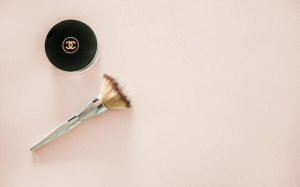Introduction
As “high-end” fashion continues to grow, more and more brands are clamoring to label themselves within this lucrative subset of the industry. Not everyone has what it takes, though, to produce high enough quality items, advertise their products as “luxury,” and sell them at gravity-defying price points.
The Nordstrom vs Bloomingdale’s debate has been around nearly as long as the department stores themselves, and central to this conversation is weeding out which brands can lay claim to the “high-end” title. Brands must truly embody the values of a typical luxury product which includes consciously sourcing materials, using artisan-level production, and being able to market to the demographic who can afford certain price points.
Exclusive fashion items which are made from exceptionally high-quality materials and are put together using expert-level finesse by trained professionals can usually be considered “high-end.” Typically, luxury fashion houses producing high-end products have the goal and responsibility towards their customers to design, create, and market clothing and accessories that are trend-setting, made in limited quantity, and highly expensive to buy.
As a side note, customers can still get top-quality items at a fraction of the price. Both Nordstrom and Bloomingdale’s have clearance shops as part of their brand. Nordstrom Rack is well-known, but did you know about Bloomingdale’s outlet stores? Next time you are in New York, you can stop by the Upper West Side Outlet on 72nd street.
Regardless of how much marketing or exclusivity goes into a product, for a brand to be termed “high-end,” its product has to meet certain conditions.
In this article, we’ll be looking into some of these conditions. We will then subject the Nordstrom vs Bloomingdale’s debate to these conditions and draw our conclusions. But first, let’s look into the history of both brands.
Nordstrom—History, Development, and Evolution
Nordstrom Inc. was founded in 1901 by John W. Nordstrom and is headquartered in Seattle, WA. Selling shoes, cosmetics, apparel, and accessories for men, women, and children, they own and operate stores worldwide. Nordstrom Inc. operates two major segments: Retail and Credit.
The Retail section operates Nordstrom’s off-price “Nordstrom Rack” store, full-line Jeffrey boutiques, and “Last Chance,”—a clearance store. Nordstrom also offers private-label merchandise and brand names focused on its retail commodities.
The credit segment includes Nordstrom’s wholly-owned federal savings bank and Nordstrom FSB—which provides:
- A private label credit card
- Nordstrom debit
- Credit cards for Nordstrom purchases
Nordstrom History
Back in 1887, at the age of 16, John W. Nordstrom left his home in Sweden in anticipation of greener pastures in New York. It turned out that things were not so simple, even in the land of opportunity. However, John pressed on and labored at the mines and logging camps after he moved to Washington’s west coast.
One day, he saw an eye-catching headline: “Gold Found in the Klondike in Alaska.” He decided to leave for Alaska that day, so he bought a ticket and traveled down. As an over-eager worker, his hard labor afforded him the ability to save $13,000 within two years in the gold mine.
Afterward, he returned to Seattle and connected with a friend from his days in Alaska—Carl Wallin, who owned a shoe shop in downtown Seattle. Together, they opened the Wallin & Nordstrom shoe store with John investing his money. That was the humble beginning of what we know as Nordstrom, Inc. today.
Their approach to business has been to provide exceptional services through careful selection, quality, and value. Soon enough, they had a customer base that adopted the idea, and by 1923, they had enough to open a second store. Five years later, John retired from the business and sold his company share to his sons Everett and Elmer. Carl Wallin also retired a year after and sold his shares to Everett and Elmer.
Nordstrom—Development
By 1960, the Nordstrom Seattle shop shoe became the largest in the United States, with eight locations in Oregon and Washington. With that much success, Nordstrom was still looking into ways to spread its wings, so the company ventured into women’s clothing.
In 1963, it purchased the Seattle-based Best Apparel, and three years later, it bought Oregon, a Portland fashion retailer. They added men’s and children’s wear in 1966, followed by two additional Washington stores. Two years later, the brothers handed over the company to the third generation of Elmer’s sons, James and John, Everett’s son Bruce, and Lloyd’s son-in-law Jack.
Nordstrom Today
Today, Nordstrom is in the hands of the fourth generation, along with the executive helm of the company. They have a remarkable team of innovators and fashion leaders. From one small shoe shop in downtown Seattle, they have now grown into a fashion specialty chain with a global reach. They operate over 270 stores, 115 full-line stores, 150 Nordstrom Racks, one clearance store, and two Jeffrey boutiques.
By the end of 2023, Nordstrom plans to reach over 230 Rack stores.
Bloomingdale’s—History, Development, and Evolution
Fashion and Bloomingdale’s are synonymous.
It’s widely known that Bloomingdale’s has some of the world’s most renowned designers who display their creations for sale. Therefore, for the last 150 years, people are drawn to the famous department store to find the latest style.
What began in 1861 – a garment store for women from the Lower East Side of New York City founded by two brothers, Lyman and Joseph Bloomingdale – has blossomed into a behemoth of a chain store selling a wide variety of products from various high-end designers and for customers of all demographics.
Bloomingdale’s—History
Lyman and Joseph Bloomingdale started with what we can call the 19th-century fad—the hoop skirt. That was the first item sold in Bloomingdale’s Ladies’ Notion Shop. In those days, fashion retailers focused on just one type of garment. However, the Bloomingdale brothers changed the narrative when, in 1872, they began to sell a wide variety of European fashion items. That was what started what we know today as the “Department Store.”
Things began to go so well that their tiny shop ran out of space, and they had to move from its 59th street and Lexington Avenue location in New York City with large glass windows where they began to display their items theatrically.
Lyman started to run print ads to attract more customers. That day, it was almost impossible to drive or walk anywhere in the city and not come across the “All Cars Transfer to Bloomingdale’s” advertising campaign. That was how Bloomingdale became the shopping destination for several people around the country and worldwide.
Bloomingdale’s—Development
The store continued to develop and gain popularity throughout the following decade. Then, in 1960, they added international designer items, including designer bags from Italy. They also achieved celebrity status in the 1970s when celebrities and royalties frequented the department store until Bloomingdale’s got featured in movies and New Yorker cartoons.
In 1973, they introduced Bloomingdale’s famous Big Brown Bag, designed initially to hold pillow, blanket, and linen purchases. The bag gained so much popularity that they expanded their creativity and developed purses for makeup, spinoff bags, and other items.
The Value of Fashion Brands (video)
They expanded beyond NYC, opening stores in places such as Boston and Philadelphia. Later they followed up with a flagship store in Chicago and other stores in Florida. These expansions took place in the 1980s and continue to date.
Bloomingdale’s—Today
Today, hundreds of Bloomingdale’s stores are operating in the United States. The company has grown so well to become a Federated Department Store division. To date, the company still offers high-quality products and several exclusive items. It has a specialty line that you cannot find anywhere globally. Customers can visit their retail shop or shop online and the company ensures that products change regularly to fit current trends and tastes.
The bottom line is that the Bloomingdale brothers didn’t invent the modern-day department store; however, they found a niche that worked and capitalized on it. They have a business model that several others have copied to varying degrees of failure and success inside and outside the industry. It’s a formula that has remained thriving for decades. As times go on, it’s sure that Bloomingdale’s will continue to bring in customers from around the globe.
Nordstrom vs Bloomingdale’s—which is Higher End?
When shopping for luxury and high-end items, few companies have the same renown that Bloomingdale’s have. That’s precisely why the Nordstrom vs Bloomingdale debate has lingered for so long. Does Nordstrom have what it takes? Let’s look:
Company Profiles
A quick look at Nordstrom vs Bloomingdale’s history showed that both companies have a strong profile. From a humble beginning, they continued to expand to what we know them to be today, and there seems to be no stopping anytime soon.
Stores
The number of stores Bloomingdale’s has cannot compare with that of Nordstrom. Bloomingdale’s has only about 55, with most of these located in the United States and only one in Dubai. Nordstrom, on the other hand, has 468 stores scattered worldwide. However, rarity is one of the ingredients that makes a high-end brand.
Achievements
In addressing its limitations, Bloomingdale’s launched a mail catalog for attending to the needs of those who are in locations where there are no Bloomingdale’s stores accessible. Since then, the company has continued to work on attracting and attending to people from all spheres of life without segregating.
Nordstrom, on the other hand, works tirelessly for creating a balance for their customers and employees. In 2009, it ranked as number 72nd on the Fortune magazine’s “100 Best Companies to Work For.” It was also number 286 on the Fortune 500 list for 2007.
Nordstrom vs Bloomingdale — A Tabular Comparison
| Bloomingdale’s | Nordstrom |
| U.S.-based department store chain founded by Joseph and Lyman G. Bloomingdale | U.S.-based department store chain founded by John W. Nordstrom |
| Started as a shop selling hoop skirts. | Started as a shoe store. |
| The first store was opened in 1872 in New York City. | The headquarters and flagship store are located in Seattle, Washington since 1901. |
| Currently owned by Macy’s, Inc. and sells a variety of fashion and beauty items and accessories. | Offers clothes, bags, accessories, jewelry, perfumes, cosmetics, and even home furniture. |
Conclusion
In the Nordstrom vs Bloomingdale debate, we can conclude that both are deserving of the “high-end” label. However, determining which is more worthy of it is a function of personal preference.
The structure of department stores has suffered in recent years, but both Nordstrom and Bloomingdale’s have developed personalized strategies to combat these challenges.







